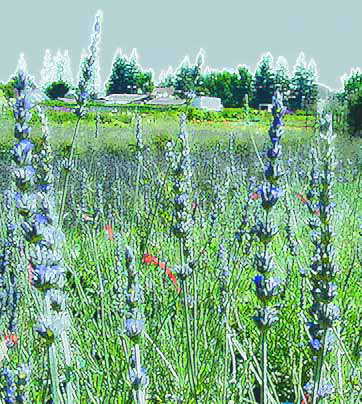characteristics
We all know that plants are beautiful in daylight. Perhaps less well known is the vast visual potential they posses when carefully and thoughtfully lit at night. It's no small challenge. Indeed, maximizing the beauty of most any landscape while also ensuring that your lighting design works well throughout the lifetime of the landscape requires a keen understanding of both plant materials and the lighting techniques that will bring them to life when the sun goes down. Furthermore, surrounding watershapes with well-lit spaces and foliage will add a distinctive aesthetic dimension to the overall design. To my mind, there's no substitute for paying attention to every plant in the plan, because overlooking any of them or ignoring the role each has to play in the overall landscape will almost invariably detract from the effectiveness of the lighting design. You can't overlook technology, either, or the need to sort through the variety of techniques that can be used to light plants while keeping an eye on a wide range of practical, aesthetic and creative issues. When you encompass all of this successfully, the results will often
Few plants have been written about, lingered over and so passionately associated with fragrance, healing and serenity as lavender. Beyond stunning beauty of the sort seen in the vast purple fields of Provence, lavender has spread worldwide, leaving a trail of exquisite aroma and touching everything from our imaginations to our health. Some say lavender has pain-killing, antiseptic and skin-rejuvenating properties and that it's great for toning skin, fighting acne and soothing burns and cuts. This versatile plant is used as well to infuse perfumes, oils and soaps, and I know from my own experience that it makes a great marinade for lamb and adds
Last month, we discussed ornamental grasses and their place as the most natural of all companions for watershapes. Now it's time to look at a few of your grass options, including something for just about every need and taste. Ornamental grasses come in such a wide range of sizes, climate preferences and colors that there really is at least one choice that will work in any client's yard. With so many choices, I'll have to narrow the list down to my personal favorites here. I'll also be suggesting some plants that aren't traditionally considered to be ornamental grasses; these are some "grass-like" plants I use as required to meet a particular design's needs. As always, I recommend
Images of waterways almost anywhere in the world are filled with gentle sweeps of free-flowing grasses swaying in the breezes or simply lazing by the water's edge. From a watershaper's perspective, these grasses are arguably the most versatile of all plant materials. In one form or another, they exist and thrive in almost every environment in the world. They can be used by themselves to lend a natural feeling to a stream or pond, next to a contemporary watershape to make a bold statement or nestled among almost any other plants in any landscape style to soften and add texture. One of the best things about grasses (particularly the taller ones) is how gracefully they wave in the wind, adding an element of
There's never been much of a tradition in this country when it comes to beautiful stonework, especially when it comes to flat stone surfaces. What you usually see is the same few stone types used over and over again in the same sorts of applications. To see a contrasting heritage, just travel in Europe and some parts of Asia, where you'll see a far greater variety of flat stone used in creative ways to create pathways, walls, decks, patios and a host of architectural features, including pilasters and finials. Of course, the Old World had a long head start on us, but even so, we've been slow in the New World to catch up with the masonry and quarrying trades as they've been practiced abroad for centuries. Fortunately, that's starting to change. My firm, Malibu Stone & Masonry of Malibu, Calif., supplies stone (flat and otherwise) to a host of contractors, landscape architects and designers. What we're seeing is a two-stage process: Professionals are surprised
The gardening impulse of the Japanese is truly ancient. In times before recorded history, sacred outdoor spaces around Shinto shrines and Buddhist temples were arranged according to this design vision. And through more than 1,000 years of recorded history, gardens have been created and refined by priests, warriors and emperors alike in spaces both public and private. The style isn't original in the strictest sense: In many ways, the gardens of Japan find their sources in Chinese gardening styles and landscape painting. But the Japanese developed and refined their borrowings to fit their own national taste for subtle naturalism and elegant rusticity. The result is an amazingly coherent and distinctive landscaping style that now can be experienced at hundreds of public gardens in Japan. The nice thing today is that you don't have to live in Tokyo to appreciate Japanese gardens - or to incorprate their principles into your designs. In fact, garden designers around the world now use the obvious elements of Japanese gardens - the stone lanterns, gravel and clipped azaleas - in naturalistic and asymmetrical settings of all shapes and sizes. In some cases, the total look of the garden is Japanese; in others, its principles are used to
I've had the pleasure over the past few years of working with a client who ultimately has become a good friend - and with whom I created a very unique garden. The process of designing the space was lengthy, but it afforded me time to truly understand my client and her wants. As we progressed, many issues arose that needed to be addressed; over time and at many points, patience was indeed a virtue. Her yard had existing structures as well as large Eucalyptus, Pittosporum and Chorisia trees and other plantings along with




















